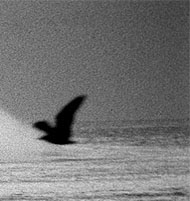|
Usually we donīt write about surf contests here because the challenge of the location itself and not the challenge of who rides the waves best is our issue. But this time, weīre talking about something different.
I mean, contests are nice to watch, itīs fun seeing skilled surfers giving their best in perfect waves. But, does it happen to you too, when you watch, letīs say a WCT-contest in Fiji, that you somehow feel untouched by the action? Perfect, empty waves in warm water, under sunny skies but it feels somehow unreal, if not to say artificial? Nothing that fits into your own experiences?
When your surfing means having to deal with much less inviting weather conditions, struggling with cold water, even colder air and often unfavourable winds coming together with pouring rain. When you know the feeling of getting bombarded by hail in the lineup, when you face the nasty weather all day, never getting far away from the beach in the fear of missing the magic moments. When you never give up hope that the wind turns offshore for an hour and the mushy onshore waves turn into perfection, only to vanish again with the next incoming rain squall. When you know the pain trying to get out of a thick wetsuit with dumb frozen fingers.
If that is your regular surf challenge, donīt you sometimes think ah those WCT or WQS guys surf well, but anybody can do that in these perfect conditions and donīt you sometimes wonder how they would perform in your typical northern european surf?
|







